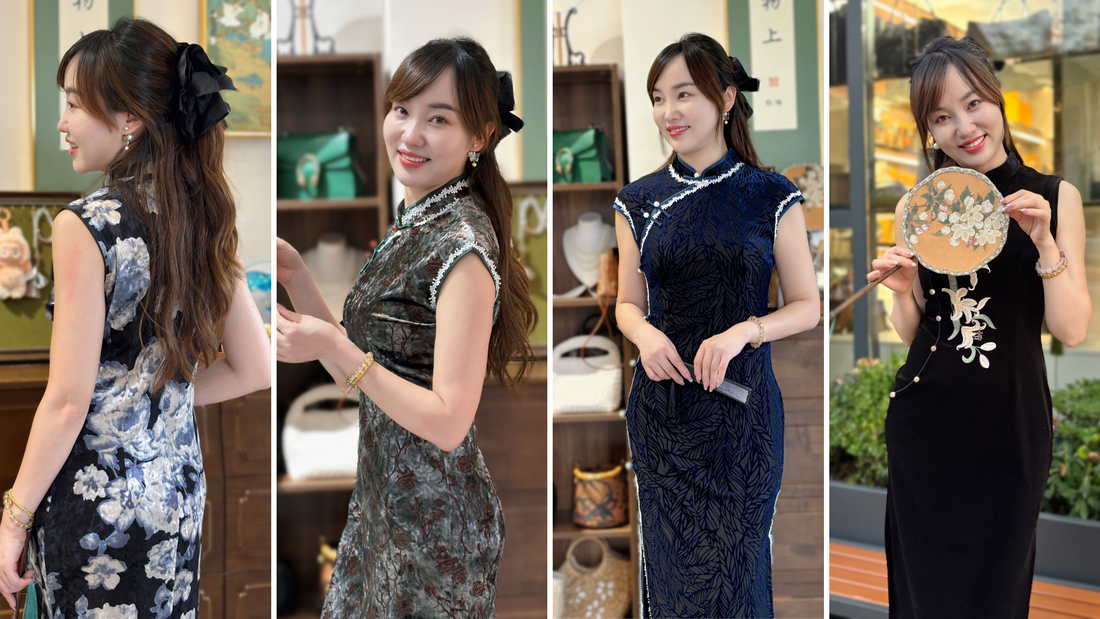
Qipao Evolution: From Traditional Chinese Dress to Modern Fashion Icon
Share
Introduction: A Timeless Symbol of Chinese Elegance
The Qipao, also known as Cheongsam, is one of the most iconic garments in Chinese fashion history. Known for its elegant silhouette, intricate details, and cultural significance, the Qipao has transcended time to become both a symbol of heritage and a staple in modern fashion. For fashion enthusiasts, designers, and cultural explorers alike, the Qipao is not just clothing — it is a celebration of artistry, identity, and timeless elegance.
From its origins in the Qing dynasty to its modern reinterpretations on runways and in everyday wardrobes, the Qipao has undergone a remarkable evolution. This article will explore its rich history, transformations through the decades, and how contemporary designers are making the Qipao relevant to today’s fashion-conscious audience.
The Origins of the Qipao
The Qipao emerged during the Qing dynasty (1644–1912), initially worn by Manchu women. The early Qipao was loose-fitting, long, and designed for modesty and practicality. Its straight lines and high collars reflected the social norms and aesthetics of the time, prioritizing elegance without revealing the body shape.
The garment was traditionally made from luxurious silk, often adorned with embroidery depicting dragons, flowers, and symbolic motifs representing prosperity, happiness, and good fortune. These patterns were not only decorative but also conveyed deep cultural meanings, connecting the wearer to centuries of Chinese heritage.
Qipao in the 1920s–1940s: The Shanghai Renaissance

The Qipao underwent its first major transformation in the 1920s and 1930s, particularly in Shanghai, which was emerging as a cosmopolitan city and cultural hub. During this period, the Qipao shifted from a loose, conservative garment to a figure-hugging, stylish dress that highlighted the female form.
This modernized version featured:
- Tailored waistlines to accentuate curves
- High side slits for mobility and subtle allure
- Shorter sleeves for a contemporary touch
- Innovative fabrics such as patterned silk, satin, and brocade
Women in Shanghai embraced the Qipao as a fashion statement, blending traditional aesthetics with Western tailoring techniques. This era solidified the Qipao as an emblem of modern femininity and urban sophistication, a status it maintains to this day.
The Cultural Significance of the Qipao

Beyond its aesthetic appeal, the Qipao is a cultural symbol. Its high collar, frog buttons, and intricate embroidery are emblematic of Eastern craftsmanship and attention to detail. Each element carries meaning:
- Frog buttons (盘扣) represent harmony and continuity
- Floral embroidery often symbolizes beauty, grace, and femininity
- Dragons or phoenix motifs reflect prosperity and power
The Qipao also became a cultural ambassador, worn during national celebrations, weddings, and formal events. For Chinese women, it represents a connection to heritage, allowing them to honor tradition while embracing modernity.
Qipao in the Mid-20th Century: Decline and Revival
After the 1940s, with the social changes in mainland China and the rise of practical clothing styles, the Qipao experienced a decline in daily wear. It became primarily associated with formal events and theatrical performances, while Western-style clothing dominated everyday life.
However, the Qipao never disappeared entirely. In Hong Kong and Taiwan, designers kept the tradition alive, experimenting with colors, fabrics, and cuts. By the late 20th century, the Qipao began to resurface in global fashion, appearing on runways, in films, and in international magazines, gradually regaining popularity as a luxury and cultural fashion item.
Modern Interpretations of the Qipao
Today, the Qipao has evolved far beyond its original form, offering endless possibilities for modern styling:
Shorter Hemlines and Casual Styles
Modern designers often experiment with mini Qipaos or A-line cuts, making them suitable for casual wear, office attire, or cocktail parties. The traditional high collar and side slits remain, ensuring the dress retains its classic identity.
Innovative Fabrics
While silk and brocade remain popular, contemporary Qipaos are now made from velvet, lace, satin, and even stretch fabrics, blending comfort with sophistication. Many designers incorporate embroidered floral motifs or abstract patterns, bridging tradition and modern art.
Fusion with Western Fashion
The Qipao has inspired countless fusion designs, such as pairing a traditional top with jeans, adding modern jackets over Qipaos, or integrating Qipao-inspired collars into dresses and blouses. This East-meets-West approach appeals to global audiences who appreciate cultural elegance in versatile forms.
Celebrity Influence and Pop Culture
Celebrities, influencers, and designers continue to reinvent the Qipao, creating buzz worldwide. Red carpet appearances, magazine editorials, and social media campaigns showcase how the Qipao complements modern beauty and lifestyle trends, attracting younger generations to embrace this heritage piece.
Styling Tips for the Modern Qipao

To incorporate a Qipao into contemporary wardrobes, consider these tips:
- Pair with Modern Accessories: Statement earrings, minimalist clutches, or delicate heels can modernize the look.
- Layer Creatively: Wear a cropped blazer or cardigan over a Qipao for a chic office outfit.
- Experiment with Fabrics: Don’t be afraid to try velvet or embroidered chiffon for casual or evening wear.
- Mix East and West: Combine Qipao elements like mandarin collars or frog buttons with Western silhouettes for a unique fusion style.
By doing so, the Qipao becomes not just a traditional garment but a dynamic fashion statement.
Why the Qipao Remains Relevant
The Qipao continues to capture attention because it represents:
- Heritage and Identity: A tangible link to Chinese culture
- Artistry and Craftsmanship: Each piece reflects meticulous design and handwork
- Versatility: Adaptable for weddings, parties, business events, and everyday wear
- Cultural Storytelling: A way to celebrate and share Eastern elegance with a global audience
As global fashion trends increasingly embrace cultural diversity, the Qipao serves as a bridge between tradition and modernity, making it more than a dress — it is a statement of identity, confidence, and elegance.
Conclusion: From Tradition to Iconic Fashion
From its roots in the Qing dynasty to its resurgence as a modern luxury fashion icon, the Qipao embodies the essence of Chinese elegance. It reflects a journey of transformation — adapting to cultural shifts, evolving in design, and inspiring contemporary fashion enthusiasts.
Whether for a wedding, formal event, or casual yet sophisticated outfit, the Qipao continues to captivate hearts worldwide. Its journey is a testament to the enduring appeal of heritage, craftsmanship, and artistic innovation.
For anyone seeking a timeless piece that blends culture with style, the Qipao offers a perfect example of how history can meet modern fashion, creating garments that are not just clothing but living art.
Related Articles:
The Modern Qipao: How Millennials and Gen Z Are Redefining Traditional Chinese Fashion
How to Accessorize Your Qipao: Shoes, Jewelry, and Makeup Pairings
The Symbolism Behind Qipao Patterns: Dragons, Peonies, and Cultural Motifs
Famous Celebrities Who Rocked the Qipao on Red Carpets
Top 10 Qipao Trends in 2025: Colors, Fabrics, and Patterns
How to Style a Qipao for Every Occasion: Weddings, Parties, and Office
Qipao vs. Cheongsam: Which Style Suits Your Modern Wardrobe?
